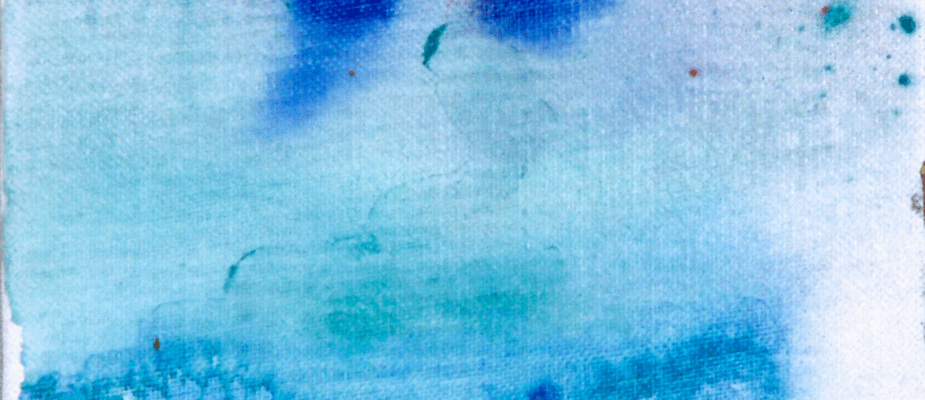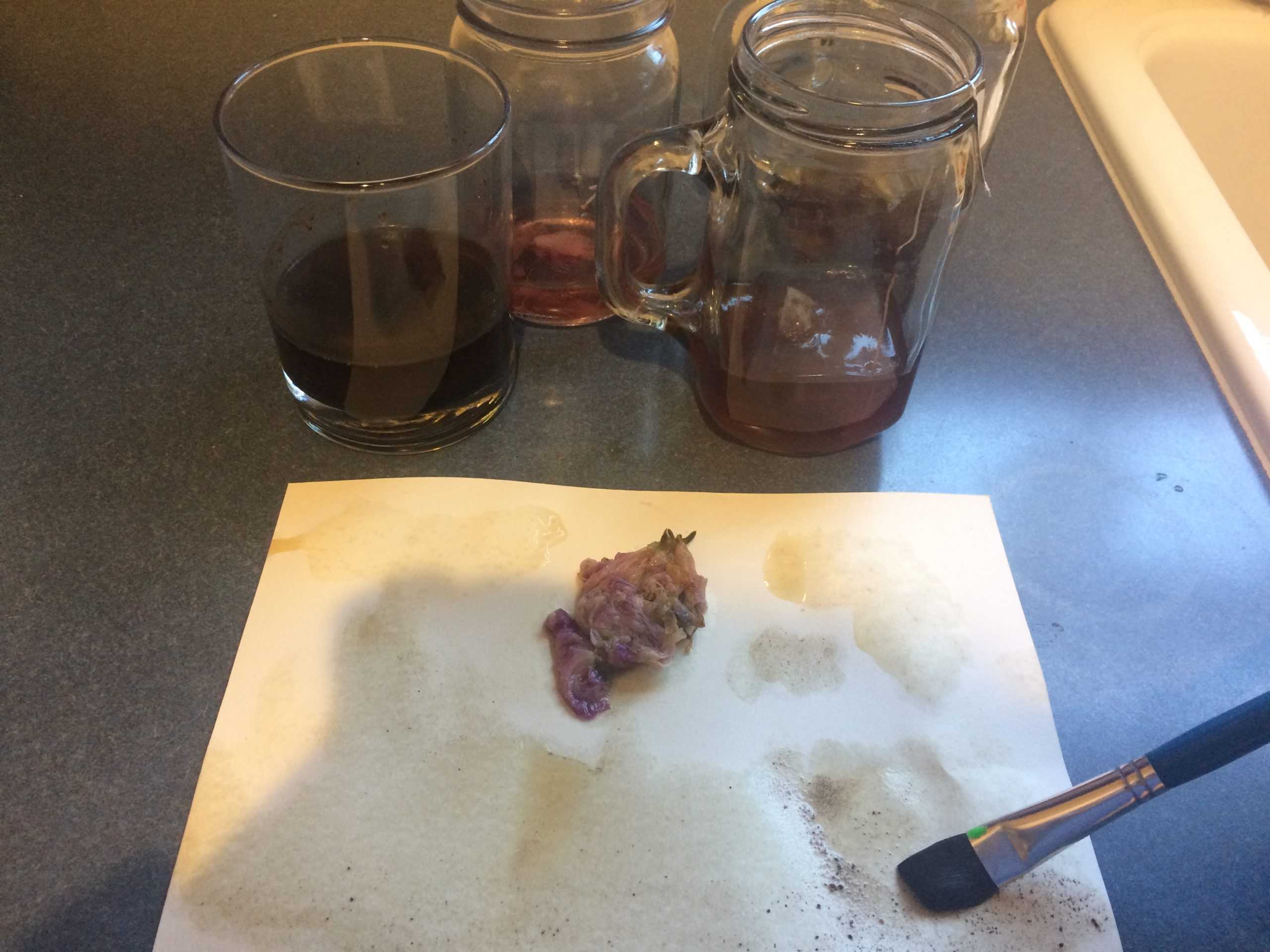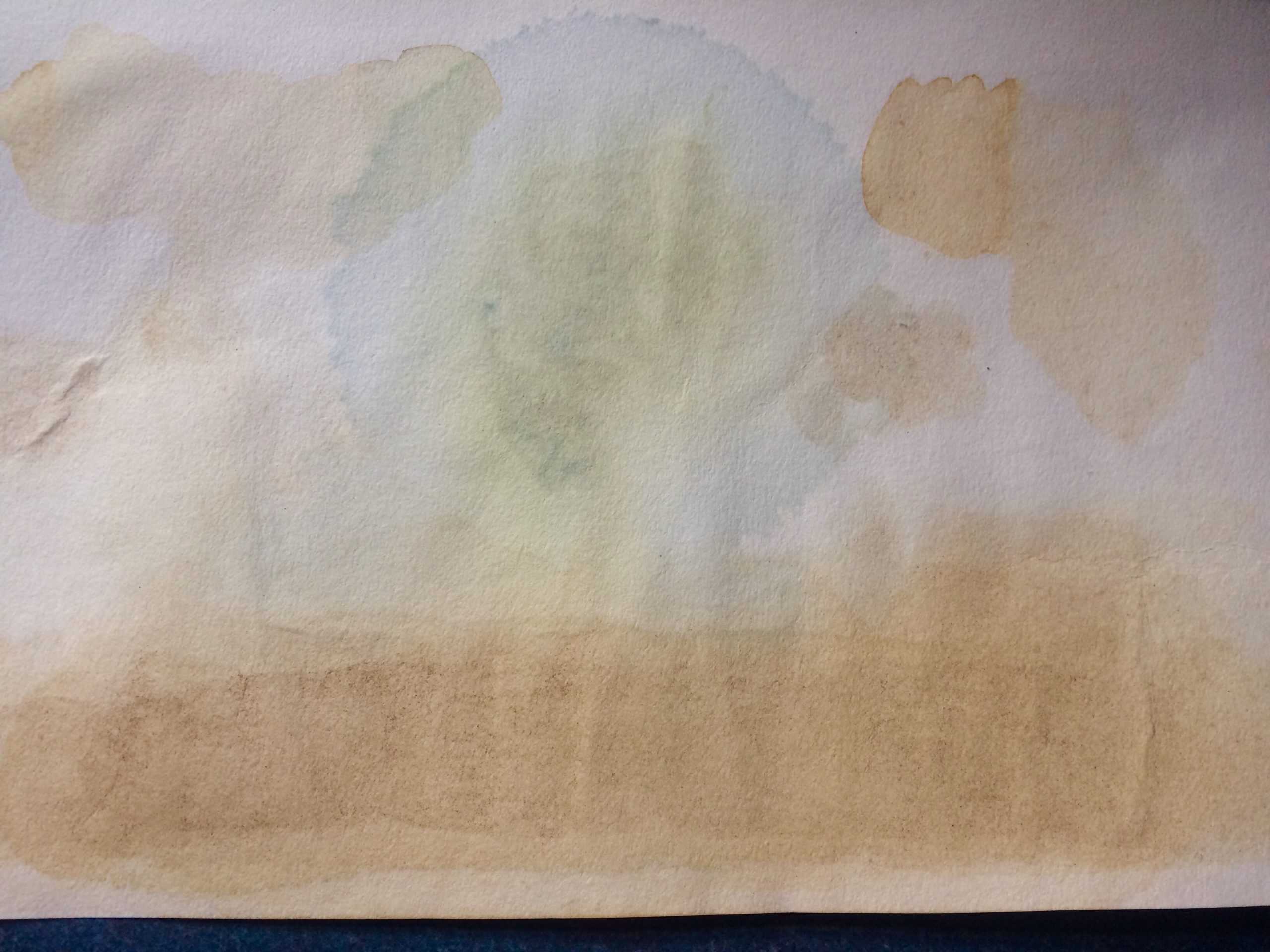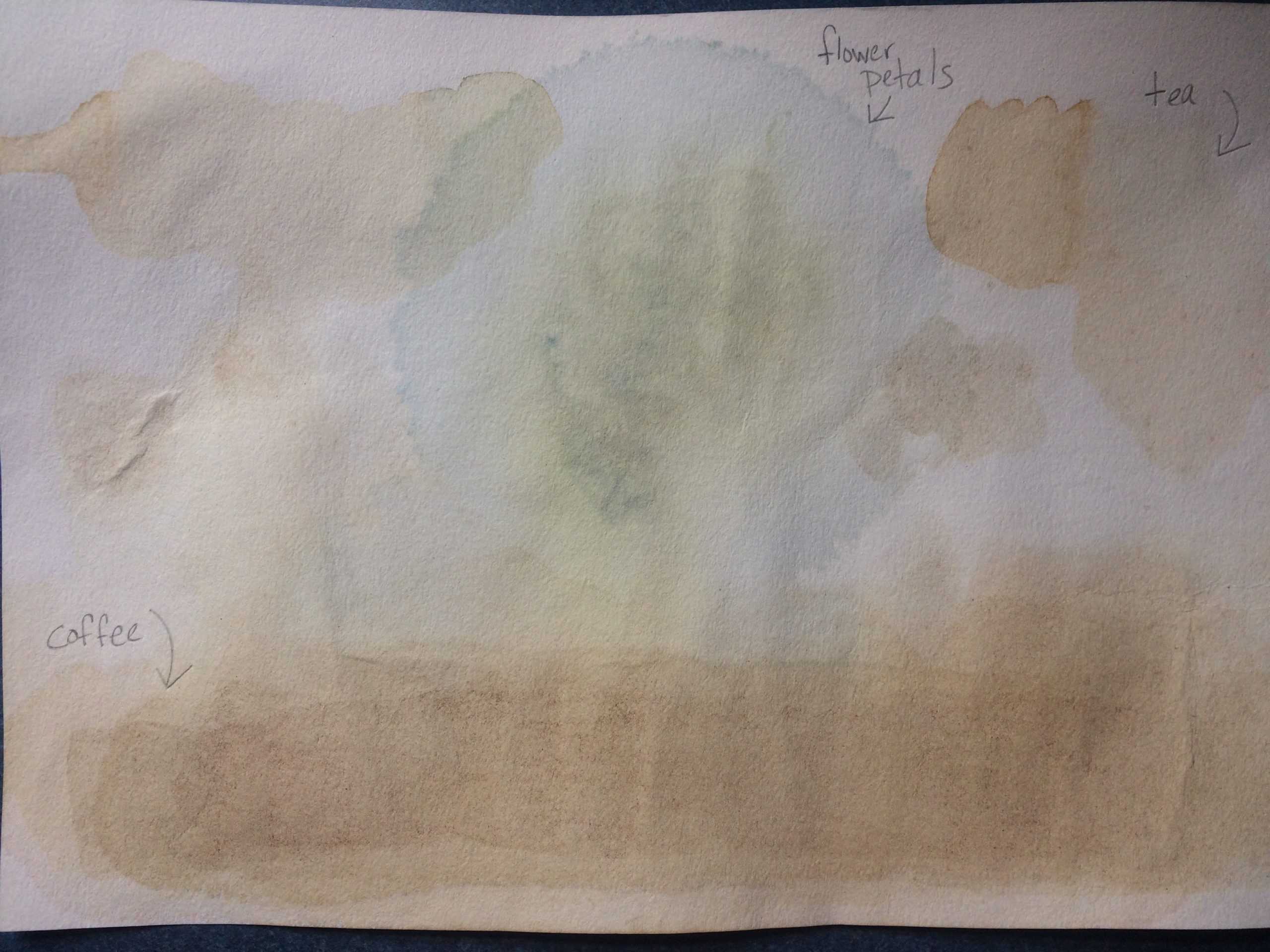Materials:
- Tea bag or coffee
- Cup or pan for making tea/coffee
- Watercolor or mixed media paper (several small pieces, index card size works great)
- Paintbrush
- Water container
Optional:
- Spray bottle with water
- Colorful nature items (flower petals, leaves, etc.)
- Pan or crock pot for slow-cooking nature items
Helen Frankenthaler was an American artist who invented a technique called “soak-stain” in the 1950s. This technique involved using thinned-down paint to create abstract paintings. Instead of using thick, opaque oil paint, Frankenthaler would add paint thinner until the paint was the consistency of watercolor. Then, she would apply it to raw canvas, or canvas that hadn’t been treated with anything. It was like painting onto fabric. She placed her canvas on the floor instead of standing it up on an easel, and when she applied the paint, it would soak the canvas and leave behind a stain. She would sometimes use brushes, rollers, or sponges to manipulate the paint. Frankenthaler would also tilt the canvas, causing the paint to drip and run.
By 1962, she began using the same technique with acrylic paints instead of oil paints. Not only did this allow her to try different colors, but it also lasted longer—the paint thinner that she had to use with oil paints damaged the canvas and caused it to deteriorate over time. Untitled was painted in 1982 with acrylic paints. Notice the halos that form at the edges of some of the paints and the way the darker colors seem to bleed into the lighter colors.
Let’s try the “soak-stain” method by using some unconventional paints, such as coffee or tea and items collected from nature!
Step one: Start by brewing strong coffee or tea. If making tea, use just enough water to cover the tea bag and let it steep. The longer you let it set, the darker the “paint” will be!
Step two: Lay your paper flat on a table or the floor. Use a paintbrush to apply tea or coffee to the paper. Let the “paint” puddle and collect in some areas. Use your paintbrush to spread it around to other areas. Let it dry. Add more layers in areas you’d like to be darker. Try spraying your paper lightly with a spray bottle before applying paint. Does the coffee/tea react differently?
Spontaneity and chance were important to Frankenthaler’s work, so now experiment with even more unexpected materials.
Step three: Collect colorful items from nature: leaves, flower petals, etc. Place them in a small amount of water in a pan or crock pot and cook at a low heat. Use a spoon or another kitchen utensil to smash the item to release color into the water as it cooks on low. Allow to cool and set overnight. If using a crock pot, cover and let cook overnight at lowest setting.

Step four: Try painting! The color will be light, so you might have to apply the paint in layers. If the color is too light, place the items directly on your paper for a while.
Did the “paint” turn out the color that you expected? Did it dry the way you expected or was it a surprise? Share it with us as #OKCMOAathome!
Credit: Helen Frankenthaler (1928–2011) Untitled, 1982, Acrylic on canvas board, 5 x 7 in. Oklahoma City Museum of Art, Gift of Paulette and Kurt Olden, 1990.016














